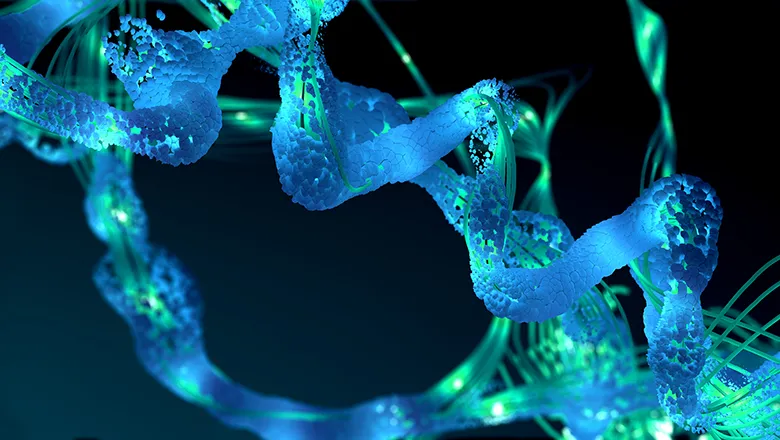This breakthrough revolutionises the development of catalysts because of its modular nature, whereby the elements can be easily changed depending on the reaction design."
Dr André Cobb
19 July 2023
King's chemists develop revolutionary new approach to designing catalysts for chemical reactions
This breakthrough will enable scientists to more carefully control and guide reactions.

Chemists at King’s College London have made a breakthrough in the way they develop artificial helix shapes for the amino acids that constitute proteins. These new synthetic shapes have the potential to transform processes such as chemical reactions through catalysis and advance medicine through novel drug development techniques.
Amino acids form the building blocks of proteins, which are crucial to carrying out processes in the human body and in nature. They can form a number of higher order structures when put into a sequence, with several types in existence, including the helix. Every protein uses a combination of some or all of these scaffolds to generate the huge diversity of functions they carry out through folding, a movement of the proteins that exposes different surfaces at different times for elements to interact with in a controlled manner.
Inspired by the way natural proteins are structured, scientists have developed artificial helixes or helices not found in nature called “Foldamers”. These artificial tools can support a whole range of applications, from drug development to materials science to chemical reactions through catalysis. Dr André Cobb and his group have developed of a new type of helix that can bring about more controlled and various forms of catalysis, as published in Angewandte Chemie Int. Ed..
The new constructs developed by Dr Cobb and his team fold in such a way that the important structural aspects required for successful catalysis are brought into close proximity together.
Dr André Cobb, a Reader in Organic Chemistry, said:
“This breakthrough revolutionises the development of catalysts because of its modular nature, whereby the elements can be easily changed depending on the reaction design.
“Normally, this would be very difficult to achieve, as most catalysts are small molecular structures that do not present many options in terms of modification. These foldamer catalysts, however, are easy to modify and can be adapted, enabling scientists to change the reaction type completely.”
For André and his team, the long-term goal of this revolutionary new approach to catalyst design, will be to use the helix to select for the synthesis of mirror image molecules (known as enantiomers). Some molecules can be arranged in two different forms which are mirror images of each other but not superimposable (such as the left and right hands).
For example, a constituent of both lavender and coriander is the same molecule, yet one is formed of the right-handed molecule and the other of left-handed molecule, which lends them the different smells. The same is true of artificial proteins found in drugs and can result in completely different therapy outcomes, for example in the infamous case of thalidomide the drug which resulted in a shocking health scandal when it was given to pregnant women in the 1950s and resulted in foetal abnormalities. There is a clear need therefore to have the ability to specifically make just one of these two mirror image forms. The Cobb Group hope to use the handedness of the catalytic helix (which can be right or left handed) to achieve this.
This breakthrough will enable scientists to more carefully control and guide reactions, as they can select between left-handed and right-handed molecules via the handedness of the helix."
Dr André Cobb
Dr Cobb said:
“This breakthrough will enable scientists to more carefully control and guide reactions, as they can select between left-handed and right-handed molecules via the handedness of the helix.
“This in turn makes chemistry itself and chemical creations more adaptable, so we can start to build completely novel materials that computational chemists come up with that can address a whole range off needs, including drug discovery, the creation of sustainable materials and even enable methods to break down plastics.”

